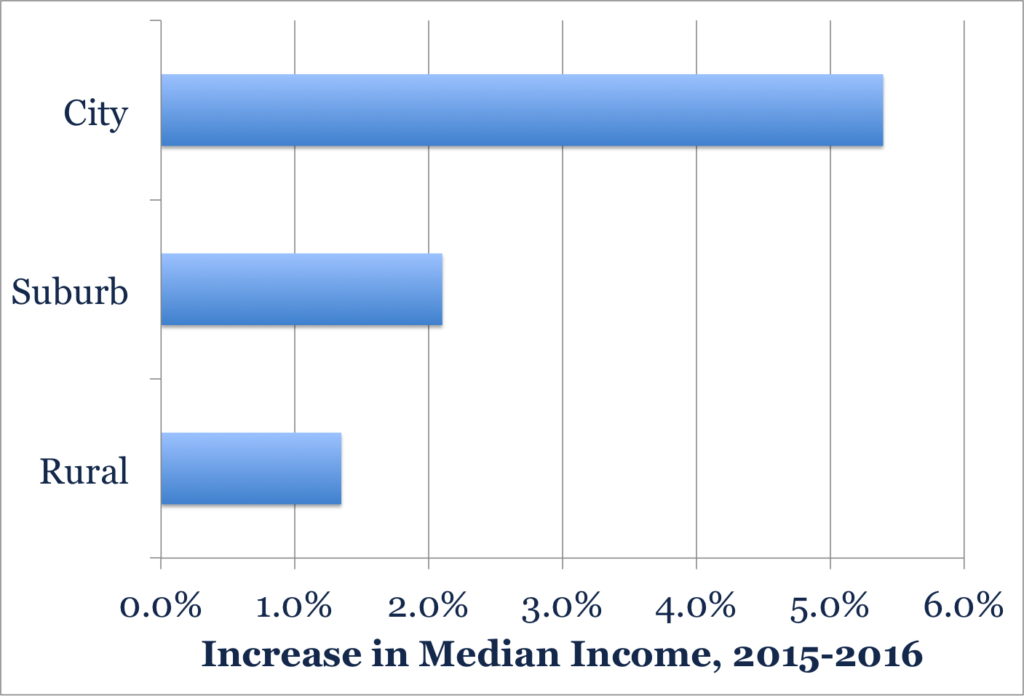Average household income in cities is increasing twice as fast as in their suburbs
Earlier this week, the Census Bureau released its latest estimates of national income based on the annual Current Population Survey. The data show some good news: a continued improvement in household incomes and a reduction in poverty. Median household income increased 3.2 percent to $59,039. Significantly, poverty rates declined in 2016, by almost a full percentage point, from 13.5 percent to 12.7 percent.
But drilling down more deeply into these data shows that city economic growth, as measured by changes in average income has been especially strong. Median household income in “principal cities”–the most populous municipality in a metro area–were up 5.4 percent over a year earlier. Meanwhile, the increase in incomes in areas outside the principal city but still inside a metro area were up only about half as much: 2.1 percent. Although using municipal boundaries and principal cities to demarcate of “city” and “suburbs” is imperfect, these data suggest that income growth in cities is significantly outstripping that of suburbs.
This performance echoes a similar strong gain in city incomes that we reported on last year. In 2015, city incomes out-paced suburban incomes according to Census Bureau tabulations 7.2 percent to 4.0 percent.
While the Census data show a clear pattern of city incomes outpacing suburban ones, they shed little light on the exact causes. Is it the incomes of existing city residents that are increasing faster than the incomes of existing suburban residents, or is it the product of migration? For example, if high income households are moving from suburbs to cities, and low income households are moving in the opposite direction, that would tend to accentuate city income growth and retard suburban income growth. The fraction of the population that moves in any one year is so small, however, that it’s unlikely to be the major cause here.
And for those who are worried about a so-called “Great Inversion”–the idea that cities are for now dominated by the rich and suburbs are populated largely by the poor–that’s clearly not the case. Even after a couple of years of much faster income growth in cities, average household incomes in cities are still, in the aggregate, much lower than in the suburbs. The median income of households in principal cities is $54,800, which is about 17 percent lower than the average of those living outside these principal cities in metropolitan areas ($66,300). In 2016, cities closed the gap in incomes with suburbs by about 2.5 percentage points. In addition, poverty rates in cities (15.9 percent) are still noticeably higher than in suburbs (10.0 percent).
This is yet more evidence of the growing strength of city economies. As we’ve pointed out at City Observatory, job growth in urban centers has been robust in this economic cycle, outpacing that of suburbs in many metro areas around the country. The demand for urban living is also fueling city income and economic growth.


